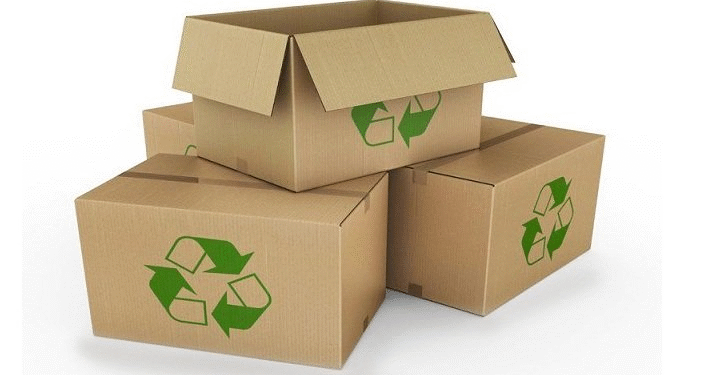Modern retailers face mounting pressure to adopt environmentally responsible practices while maintaining profitability and customer satisfaction. Sustainable packaging has emerged as a critical battleground where businesses can demonstrate their commitment to environmental stewardship without compromising operational efficiency.
Consumer expectations have shifted dramatically. A recent Nielsen study found that 73% of global consumers would change their consumption habits to reduce environmental impact. This consumer awareness creates both challenges and opportunities for retailers seeking to balance sustainability goals with practical business needs.
The transition to sustainable packaging requires strategic planning, careful material selection, and often significant upfront investment. However, retailers who successfully navigate this transformation often discover cost savings, enhanced brand loyalty, and improved market positioning that more than justify the initial expenditure.
Understanding Sustainable Packaging Materials
The foundation of any sustainable packaging strategy lies in material selection. Biodegradable materials like cornstarch-based plastics, mushroom packaging, and seaweed-derived films offer promising alternatives to traditional petroleum-based plastics. These materials break down naturally without leaving harmful residues, addressing the long-term environmental impact of packaging waste.
Recycled content presents another viable pathway. Post-consumer recycled cardboard and paper products reduce demand for virgin materials while maintaining structural integrity. Many retailers find that incorporating 30-50% recycled content strikes an optimal balance between sustainability and performance.
Compostable packaging materials deserve special consideration for food retailers and restaurants. These materials can be processed in commercial composting facilities, completing the circular economy loop. However, retailers must ensure their customers have access to appropriate composting infrastructure to realize these benefits.
Rightsizing and Design Optimization
Effective sustainable packaging often means using less material overall. Rightsizing involves matching package dimensions precisely to product requirements, eliminating unnecessary void fill and reducing shipping volumes. This approach simultaneously cuts material costs and transportation emissions.
Smart design principles can dramatically reduce environmental impact. Eliminating mixed materials that complicate recycling, reducing adhesive use, and creating modular designs that consumers can easily disassemble all contribute to improved sustainability outcomes. Custom packaging design should prioritize these principles from the initial concept phase.
Retailers increasingly employ packaging optimization software to analyze their current packaging portfolio and identify improvement opportunities. These tools can reveal surprising insights about material usage, shipping efficiency, and end-of-life disposal options.
Building Consumer Education and Engagement
Sustainable packaging initiatives fail when consumers don’t understand proper disposal methods. Clear labeling that explains whether packaging should be recycled, composted, or disposed of through special programs prevents well-intentioned materials from ending up in landfills.
Interactive education campaigns can transform packaging sustainability from a corporate initiative into a shared mission. QR codes linking to disposal instructions, social media campaigns highlighting environmental benefits, and in-store demonstrations of packaging innovations all help build consumer buy-in.
Some retailers have successfully implemented take-back programs where customers return packaging for proper recycling or reuse. These programs create ongoing customer touchpoints while ensuring materials reach appropriate processing facilities.
Measuring and Communicating Impact
Quantifying sustainability improvements requires robust measurement systems. Key metrics include packaging weight reduction, recycled content percentages, recyclability rates, and lifecycle carbon footprint assessments. These measurements provide concrete data for internal decision-making and external communication.
Third-party certifications from organizations like the Sustainable Packaging Coalition or Forest Stewardship Council lend credibility to sustainability claims. These certifications help retailers avoid “greenwashing” accusations while providing customers with trusted verification of environmental benefits.
Regular impact reporting builds transparency and accountability. Annual sustainability reports that detail packaging improvements, environmental benefits achieved, and future commitments demonstrate genuine commitment to environmental responsibility.
Overcoming Implementation Challenges
Cost considerations often create the biggest barrier to sustainable packaging adoption. While eco-friendly materials may carry higher unit costs, retailers should evaluate total cost of ownership including waste disposal fees, brand value enhancement, and potential regulatory compliance savings.
Supply chain complexity increases when sourcing sustainable materials. Retailers may need to diversify supplier networks, invest in new vendor relationships, and manage longer lead times during the transition period. Building these relationships early prevents disruptions during peak seasons.
Performance concerns about sustainable materials can be addressed through rigorous testing and gradual rollouts. Piloting new packaging solutions with limited product lines allows retailers to identify and resolve issues before full-scale implementation.
Creating Long-term Value Through Sustainable Practices
Sustainable packaging strategies that align with broader business objectives create lasting competitive advantages. Retailers who integrate sustainability into their core value proposition often discover new market opportunities, attract environmentally conscious employees, and build stronger relationships with sustainability-focused suppliers.
The regulatory landscape increasingly favors businesses with proactive environmental strategies. Extended producer responsibility laws, plastic reduction mandates, and carbon pricing mechanisms all trend toward making sustainable practices not just environmentally responsible but economically necessary.
Forward-thinking retailers view sustainable packaging as an investment in future business resilience. As resource scarcity increases and environmental regulations tighten, companies with established sustainable practices will have significant operational and competitive advantages over those scrambling to catch up.













